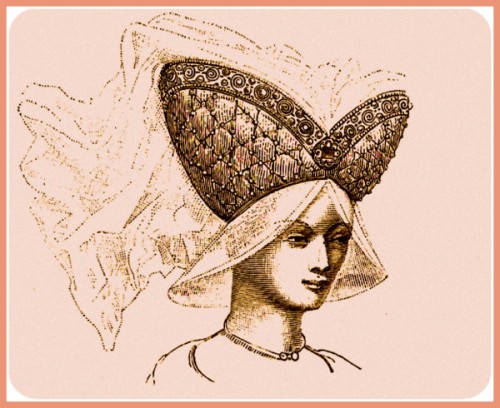Why did European at the start of the medieval period begin to wear hats, and caps and ever more elaborate (and frequently downright silly and other times downright ugly) headgear if they were the privileged classes?
The Greeks and the Romans didn't wear big silly things on their heads by-and-large, other than hoods from their cloaks and battle helmets. True, the odd laurel leaf crown showed up at drinking parties and ceremonies honoring poets, generals and dictators.
But not this sort of thing.
Or these.
Now this is quite attractive. Naturally, it's Italian, who drew many fashion ideas from both Africa and the Turks.
But this sort of thing (poor Katherine of Aragon!) is downright hideous, and surely most uncomfortable (but since when has fashion ever been interested in comfort?).
Men generally had more attractive headwear, it seems, though the head on which the hat was hung may not have been so attractive. Thinking Henry VIII.
Where did this thing begin? With the Church?
It's hard not to think Monty Python made these up.
Subscribe to:
Post Comments (Atom)







No comments:
Post a Comment